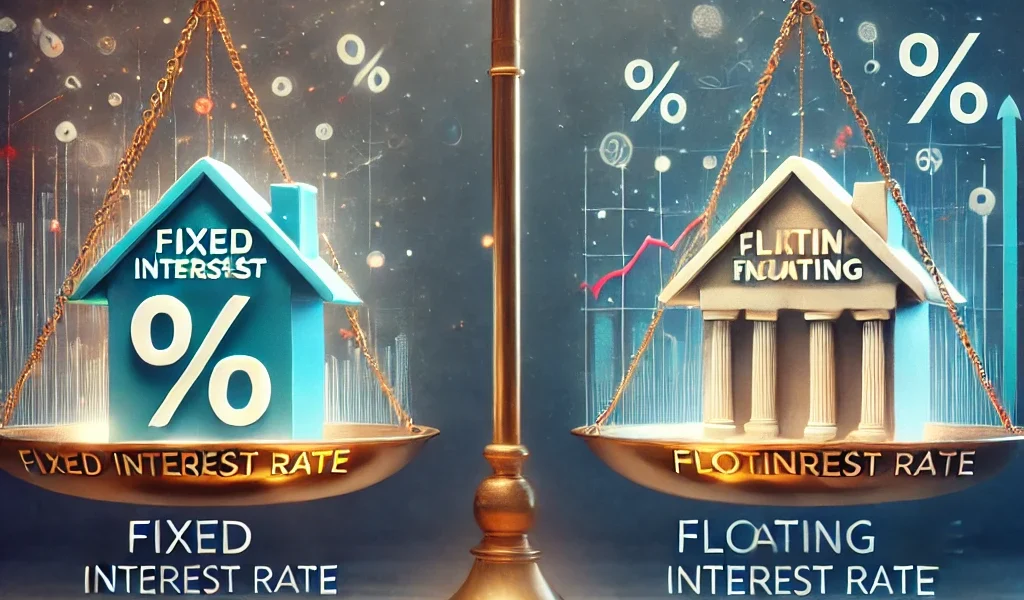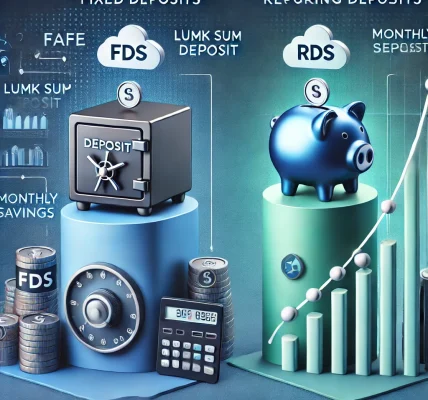Buying a home is one of the most significant financial decisions in life, and choosing the right home loan can make a big difference in your long-term financial stability. One of the crucial factors in selecting a home loan is the interest rate type—whether to go with a fixed interest rate or a floating interest rate. Both options have their advantages and drawbacks, and the right choice depends on your financial goals, market conditions, and risk tolerance.
In this guide, we will compare fixed vs. floating interest rate home loans to help you make an informed decision.
What is a Fixed Interest Rate Home Loan?
A fixed interest rate home loan is a loan where the interest rate remains constant throughout the agreed period, regardless of market fluctuations. This provides stability and predictability in monthly payments.
Pros of Fixed Interest Rate Home Loans:
- Predictable Monthly Payments: The EMI (Equated Monthly Installment) remains the same, making it easier to budget.
- Protection from Market Fluctuations: Since the rate is fixed, borrowers are unaffected by rising interest rates.
- Best for First-Time Buyers: Those who prefer financial stability and have a tight budget benefit from fixed rates.
Cons of Fixed Interest Rate Home Loans:
- Higher Initial Interest Rates: Fixed-rate loans usually have higher starting interest rates compared to floating rates.
- No Benefit from Rate Drops: If market rates fall, borrowers won’t get a reduction in their interest payments.
- Limited Fixed Term: Many lenders offer fixed rates for only a few years (e.g., 3-10 years), after which the loan may switch to a floating rate.
What is a Floating Interest Rate Home Loan?
A floating (or variable) interest rate home loan has an interest rate that fluctuates based on the market or a benchmark rate set by financial institutions (e.g., repo rate, LIBOR, or prime lending rate).
Pros of Floating Interest Rate Home Loans:
- Lower Interest Rates Initially: Floating rates are usually lower than fixed rates at the time of borrowing.
- Benefit from Rate Cuts: If market interest rates decrease, borrowers pay lower EMIs.
- Long-Term Savings: Over time, a floating rate loan may be cheaper if interest rates decline.
Cons of Floating Interest Rate Home Loans:
- Uncertainty in EMIs: Monthly payments may fluctuate, making budgeting challenging.
- Higher Interest in Rising Markets: If market rates increase, borrowers will pay more in interest.
- Financial Planning Difficulty: Those with fixed budgets may find it hard to manage fluctuating payments.
Key Differences Between Fixed and Floating Interest Rates
| Feature | Fixed Interest Rate | Floating Interest Rate |
|---|---|---|
| Stability | High – EMI remains constant | Low – EMI fluctuates with market rates |
| Initial Interest Rate | Higher | Lower |
| Benefit from Market Rate Drops | No | Yes |
| Impact of Rate Hikes | None | EMI increases if rates rise |
| Best For | Those who prefer stability and predictable payments | Those who can manage fluctuations and want potential savings |
How to Choose Between Fixed and Floating Interest Rates?
Here are some factors to consider when deciding:
- Your Risk Appetite: If you are risk-averse and prefer stable payments, go for a fixed-rate loan. If you can handle market fluctuations, a floating rate may work.
- Market Conditions: If interest rates are expected to rise, a fixed rate is better. If rates are expected to drop, a floating rate can save money.
- Loan Tenure: For short-term loans (e.g., 5-7 years), fixed rates may be beneficial. For long-term loans (e.g., 15-30 years), floating rates may offer more savings.
- Financial Stability: If you have a steady income and a tight budget, fixed rates provide certainty. If you can manage payment variations, a floating rate might be better.
Can You Switch Between Fixed and Floating Rates?
Yes, many banks allow borrowers to convert between fixed and floating rates by paying a nominal switching fee. This is useful if market conditions change and you want to adjust your loan type accordingly.
Common FAQs
1. Which type of interest rate is better for first-time homebuyers?
First-time buyers who prefer stability should opt for fixed rates, while those who can manage some risk might benefit from floating rates.
2. Can I negotiate interest rates with the bank?
Yes, some banks allow negotiation, especially if you have a strong credit score and good financial history.
3. What happens if market interest rates drop significantly?
If you have a floating-rate loan, your EMI will reduce. If you have a fixed-rate loan, you will not benefit unless you refinance your loan.
4. Is there an option to convert a floating-rate loan to a fixed-rate loan?
Yes, most lenders offer conversion, but they may charge a fee.
5. How can I check which type of loan suits me best?
Consider using an online EMI calculator to compare monthly payments under different scenarios.
Final Thoughts
Choosing between a fixed and floating interest rate home loan depends on your financial situation, risk tolerance, and market conditions. A fixed-rate loan offers peace of mind with consistent payments, while a floating-rate loan provides potential savings when interest rates fall.
Before making a decision, compare loan offers from different banks, analyze market trends, and use loan calculators to estimate your costs. Making an informed choice will ensure a stress-free home loan experience!




